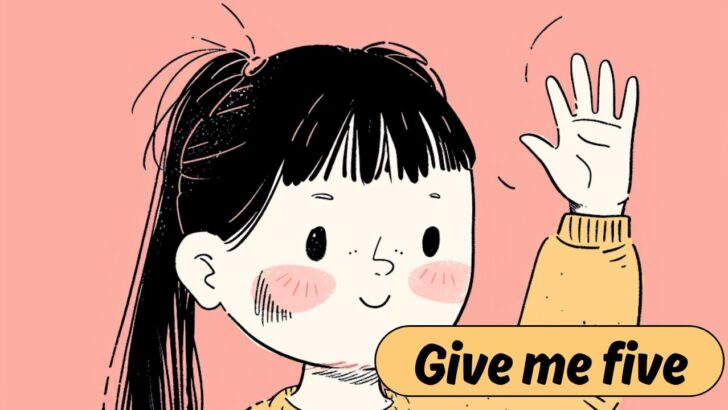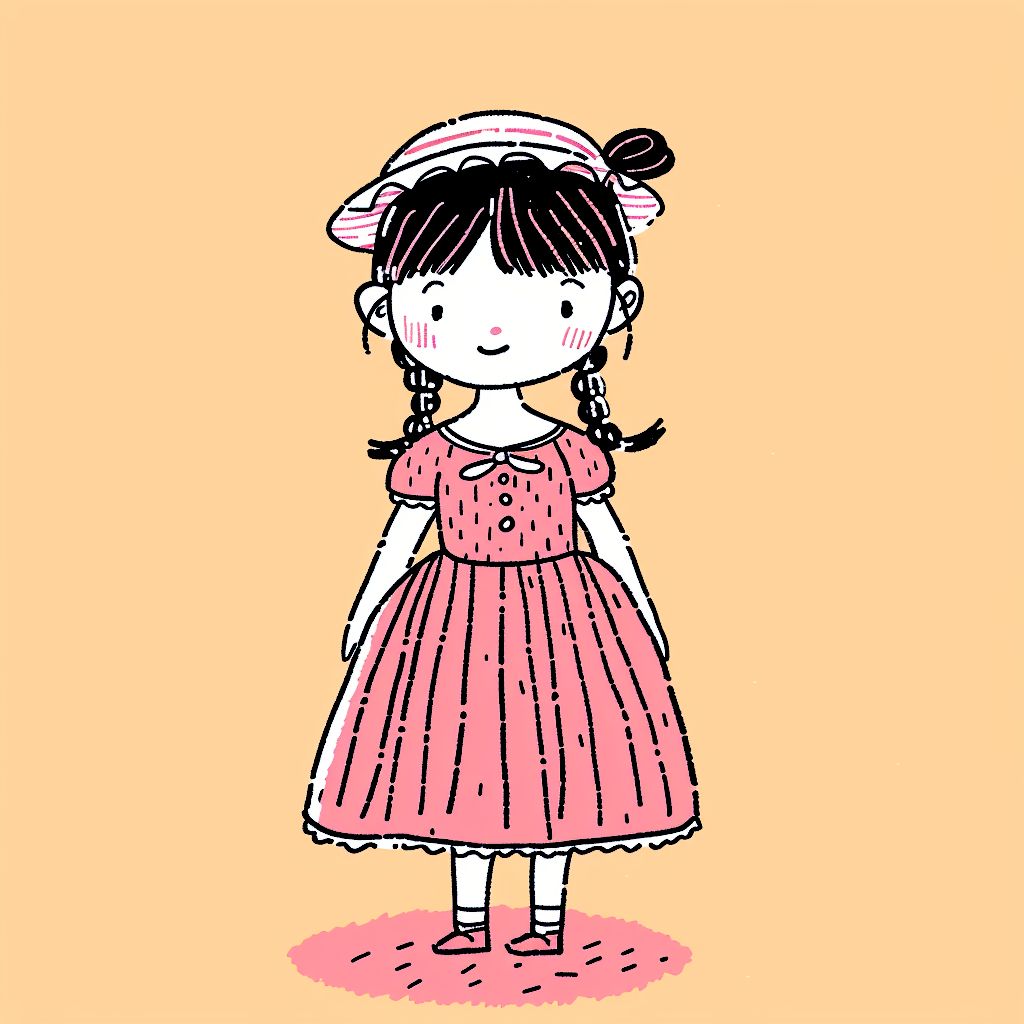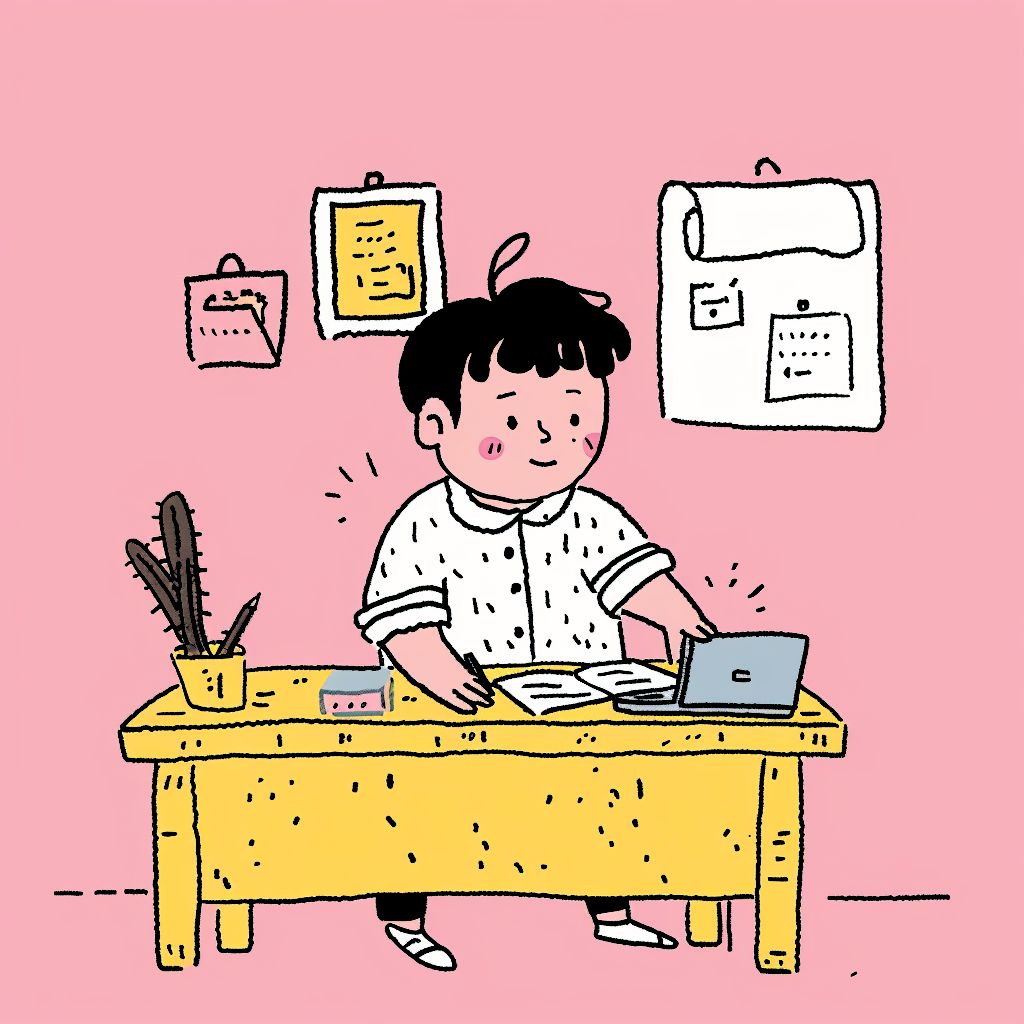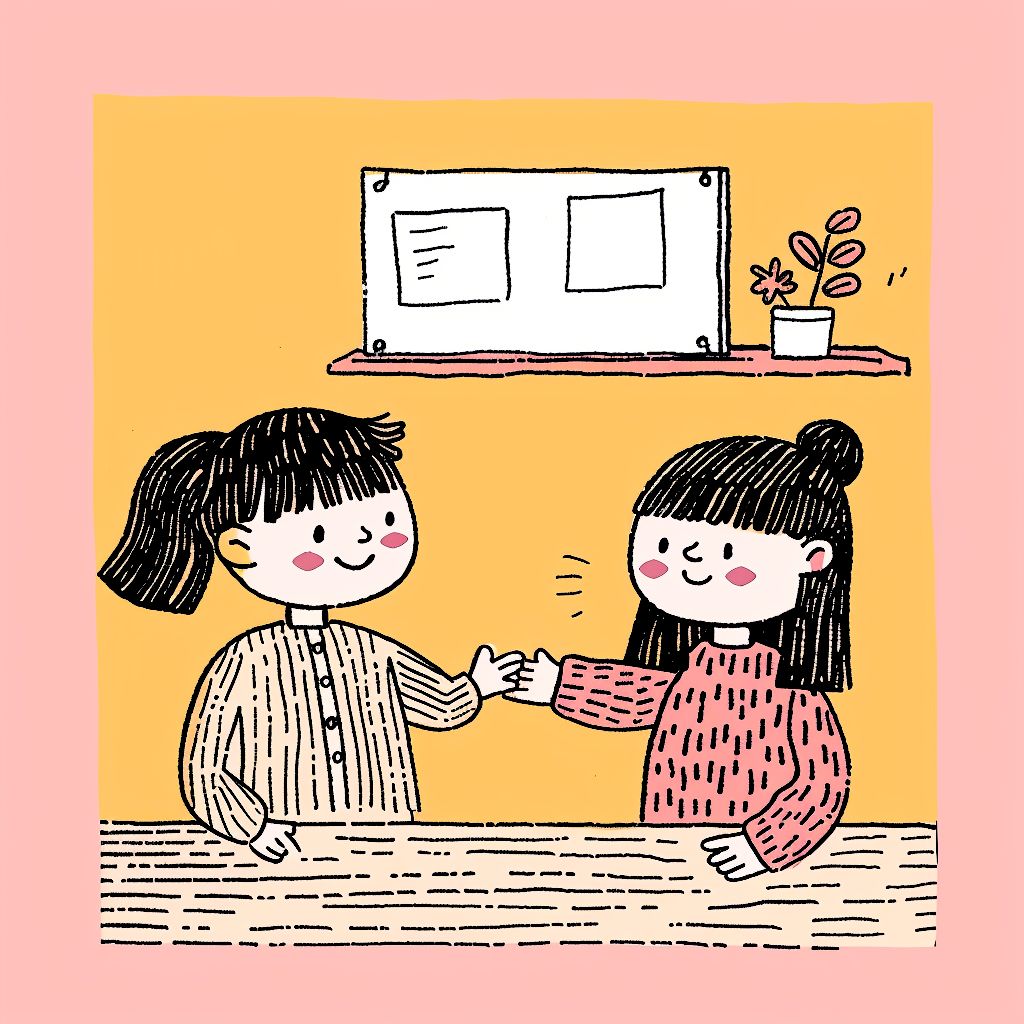Numbers aren’t just for math class—they’re hiding in our language, too!
From expressing emotions to describing situations, number idioms are everywhere.
Ready to have some fun?
Have a look into these 32 number idioms that will make you laugh and think.
Get ready for a smart and witty adventure through the world of numbers!
1. At sixes and sevens
Ever felt “at sixes and sevens”? This idiom describes a state of confusion or disarray.
The phrase likely originated from an old dice game where rolling a six or seven was risky. It perfectly captures the feeling when everything seems chaotic and disorganized.
Mentioning “at sixes and sevens” can highlight how someone is experiencing a lot of confusion or disorder.
Example 1: “With the office renovation, everyone was at sixes and sevens, not knowing where anything was.”
Example 2: “He felt at sixes and sevens after moving to a new city and starting a new job.”
2. Back to square one
Being “back to square one” means having to start over from the beginning.
It might come from board games like snakes and ladders, where players are sent back to the start. It’s a great way to express frustration when a plan fails and you need to begin again.
Using “back to square one” can emphasize the frustration of starting over after a setback.
Example 1: “After the software crashed, the developers were back to square one with their project.”
Example 2: “She thought she was making progress with her book, but the writer’s block put her back to square one.”
3. Behind the eight ball
Feeling “behind the eight ball” is when you’re in a difficult or disadvantageous position.
The term comes from the game of pool, where being positioned behind the eight ball makes it hard to make a good shot. It’s useful for describing tricky situations.
Bringing up “behind the eight ball” can highlight how someone is in a tough spot and struggling to get ahead.
Example 1: “With all these unexpected expenses, I feel like I’m behind the eight ball financially.”
Example 2: “After missing a week of classes, she was really behind the eight ball with her assignments.”
4. Catch-22
A “catch-22” refers to a paradoxical situation where you can’t achieve a desired outcome because the conditions contradict each other.
It was popularized by Joseph Heller’s novel “Catch-22”. It’s great for describing no-win situations.
Using “catch-22” can highlight how someone is stuck in an impossible scenario.
Example 1: “He needs job experience to get a job, but he needs a job to get experience. It’s a real catch-22.”
Example 2: “The policy puts small businesses in a catch-22, requiring them to comply with regulations that they can’t afford to meet.”
5. Cloud nine
Being on “cloud nine” means feeling extremely happy or euphoric.
The origin is unclear, but it’s thought to come from the classification of clouds, with nine being the fluffy, pretty ones. It’s perfect for expressing a state of bliss.
Using “cloud nine” can emphasize someone’s extreme happiness or excitement.
Example 1: “When she got accepted into her dream school, she was on cloud nine for weeks.”
Example 2: “He was on cloud nine after winning the championship game.”
6. Dressed to the nines
Someone “dressed to the nines” is wearing very fashionable or formal clothes.
The phrase’s origin is unclear, but it conveys the idea of looking extremely stylish. It’s ideal for describing someone who is exceptionally well-dressed.
Mentioning “dressed to the nines” can highlight how someone is impeccably dressed for an occasion.
Example 1: “She was dressed to the nines for the gala, turning heads as soon as she walked in.”
Example 2: “He showed up to the interview dressed to the nines, making a great first impression.”
7. Fifteen minutes of fame
“Fifteen minutes of fame” refers to a brief period of being in the spotlight or gaining public attention.
It was coined by artist Andy Warhol, who suggested everyone gets their chance at fame. It’s great for describing short-lived popularity.
Saying “fifteen minutes of fame” can highlight someone’s temporary period of attention or recognition.
Example 1: “Her viral video gave her fifteen minutes of fame, but it didn’t last long.”
Example 2: “Winning the local talent show gave him his fifteen minutes of fame.”
8. Five o’clock shadow
A “five o’clock shadow” refers to the stubble of facial hair that appears late in the day on a man who shaved in the morning.
It perfectly captures the look of slight, end-of-day beard growth. It’s useful for describing a rugged, slightly unshaven appearance.
Bringing up “five o’clock shadow” can highlight someone’s slightly unshaven look.
Example 1: “By the end of the workday, he had a noticeable five o’clock shadow.”
Example 2: “He thought his five o’clock shadow made him look more mature and rugged.”
9. Four corners of the earth
Traveling to the “four corners of the earth” means going to the farthest parts of the world.
It comes from the ancient belief that the earth was flat with four corners. It’s perfect for emphasizing extensive travel or exploration.
Mentioning “four corners of the earth” can highlight someone’s adventurous spirit or extensive travels.
Example 1: “She’s been to the four corners of the earth, experiencing different cultures and landscapes.”
Example 2: “His job as a photojournalist takes him to the four corners of the earth.”
10. Four-letter word
A “four-letter word” refers to a swear word or vulgar term.
The term highlights the brevity and impact of these words. It’s a discreet way to mention cursing without using explicit language.
Referring to a “four-letter word” can subtly indicate that someone used offensive language.
Example 1: “He stubbed his toe and let out a string of four-letter words.”
Example 2: “She was so frustrated, she almost used a four-letter word in front of her boss.”
11. Four-square
Someone standing “four-square” is firm and resolute.
It conveys a sense of stability and determination. It’s great for describing someone who is unwavering in their stance or beliefs.
Using “four-square” can emphasize someone’s firmness and reliability.
Example 1: “He stood four-square behind his decision, despite the criticism.”
Example 2: “She’s four-square about her principles and never compromises on them.”
12. Give me five
“Give me five” is a request for a high-five, a gesture of celebration or agreement.
It’s a fun, informal way to share a moment of joy or solidarity. It’s perfect for moments of success or camaraderie.
Saying “give me five” can add a playful, celebratory touch to a conversation.
Example 1: “After scoring the winning goal, his teammates all shouted, ‘Give me five!’”
Example 2: “She aced her final exam and turned to her friend, saying, ‘Give me five!’”
13. In seventh heaven
Being in “seventh heaven” means feeling extremely happy or blissful.
The phrase has roots in various religious traditions that describe a seventh heaven as the highest, most blissful state. It’s perfect for expressing extreme happiness.
Mentioning “in seventh heaven” can highlight someone’s state of pure joy and contentment.
Example 1: “When he proposed and she said yes, he was in seventh heaven.”
Example 2: “She was in seventh heaven after landing her dream job.”
14. Kill two birds with one stone
“Kill two birds with one stone” means achieving two goals with a single action.
The phrase suggests efficiency and cleverness. It’s ideal for describing situations where one action successfully accomplishes multiple objectives.
Using “kill two birds with one stone” can emphasize someone’s efficiency or clever strategy.
Example 1: “By carpooling to work, they were able to save money on gas and reduce their carbon footprint, killing two birds with one stone.”
Example 2: “She decided to study for her exam while on the train, killing two birds with one stone.”
15. Nine-to-five job
A “nine-to-five job” refers to a typical full-time job with standard daytime hours.
It reflects the conventional work schedule. It’s useful for describing a routine, structured work life.
Mentioning “nine-to-five job” can highlight the regularity and predictability of someone’s work schedule.
Example 1: “He’s tired of his nine-to-five job and is looking for something more flexible.”
Example 2: “She enjoys the stability of her nine-to-five job.”
16. Nine times out of ten
“Nine times out of ten” means something happens most of the time, almost always.
It emphasizes frequency and predictability. It’s perfect for describing common occurrences or typical outcomes.
Saying “nine times out of ten” can emphasize the likelihood or commonality of an event.
Example 1: “Nine times out of ten, he’s late for meetings.”
Example 2: “Nine times out of ten, she orders the same thing for lunch.”
17. On all fours
Being “on all fours” describes crawling on hands and knees.
It’s often used to describe searching for something on the ground or mimicking an animal’s movement. It’s a vivid way to describe someone’s position or action.
Mentioning “on all fours” can vividly describe someone’s position.
Example 1: “The toddler was on all fours, exploring the living room.”
Example 2: “He was on all fours, looking for his contact lens on the floor.”
18. One-hit wonder
A “one-hit wonder” refers to someone who achieves success with one major achievement but fails to replicate it.
It’s often used to describe musicians with only one popular song.
Using “one-hit wonder” can highlight someone’s brief period of fame or success.
Example 1: “The band was a one-hit wonder, famous for their single song in the 90s.”
Example 2: “Despite being a one-hit wonder, his song is still popular at parties.”
19. One in a million
Someone or something that is “one in a million” is very rare and special.
This phrase emphasizes uniqueness and exceptional quality. It’s perfect for highlighting something extraordinary.
Using “one in a million” can highlight someone’s exceptional nature.
Example 1: “Her dedication to her work makes her one in a million.”
Example 2: “Finding a friend like him is one in a million.”
10. One-man show
A “one-man show” is a performance by a single person, or it can refer to someone who handles everything themselves.
It emphasizes individual effort and talent. It’s useful for describing someone who is self-reliant and multi-talented.
Mentioning “one-man show” can highlight someone’s ability to manage everything alone.
Example 1: “He ran the whole project by himself, a true one-man show.”
Example 2: “Her stand-up comedy act was a one-man show that had the audience laughing all night.”
11. One-trick pony
A “one-trick pony” refers to someone who is only good at one thing.
It emphasizes limited skills or talents. It’s ideal for describing someone who lacks versatility.
Using “one-trick pony” can highlight someone’s narrow range of abilities.
Example 1: “The actor is criticized for being a one-trick pony, always playing the same type of role.”
Example 2: “She’s a one-trick pony in the kitchen, only making pasta.”
12. One-upmanship
“One-upmanship” is the practice of trying to outdo someone else.
It highlights competitiveness and a desire to be superior. It’s perfect for describing situations where people constantly try to surpass each other.
Mentioning “one-upmanship” can emphasize someone’s competitive nature.
Example 1: “Their conversations often turned into a game of one-upmanship.”
Example 2: “He’s always engaging in one-upmanship, trying to be better than his colleagues.”
13. Put two and two together
To “put two and two together” means to figure something out from the available information.
It emphasizes logical reasoning and deduction. It’s useful for describing moments of realization or understanding.
Using “put two and two together” can highlight someone’s moment of insight.
Example 1: “When she saw his car outside, she put two and two together and realized he was visiting.”
Example 2: “After finding the missing piece of the puzzle, he put two and two together and solved the mystery.”
14. Six of one, half a dozen of the other
This phrase means that two options are essentially the same, with no significant difference between them.
It’s a useful way to express that two choices are equivalent.
Using “six of one, half a dozen of the other” can highlight the lack of difference between two options.
Example 1: “Whether you drive or take the train, it’s six of one, half a dozen of the other in terms of travel time.”
Example 2: “Choosing between the two restaurants is six of one, half a dozen of the other; both have great food.”
15. Take five
“Take five” means to take a short break, typically five minutes.
It’s a casual, familiar way to suggest pausing for a rest.
Mentioning “take five” can emphasize the need for a quick, refreshing break.
Example 1: “Let’s take five and then get back to work.”
Example 2: “She decided to take five after a long stretch of studying.”
16. Third time’s the charm
“Third time’s a charm” suggests that after two failures, the third attempt will be successful.
It’s an optimistic way to encourage persistence and patience.
Using “third time’s a charm” can highlight hope and determination after repeated attempts.
Example 1: “He failed his driving test twice, but he’s sure the third time’s a charm.”
Example 2: “After two unsuccessful tries, she’s hoping third time’s a charm with her job application.”
17. Three strikes and you’re out
“Three strikes and you’re out” means after three mistakes or failures, there are no more chances.
The phrase comes from baseball. It’s perfect for describing situations where someone has limited opportunities before facing consequences.
Using “three strikes and you’re out” can highlight the finality of repeated failures.
Example 1: “At work, it’s three strikes and you’re out for missing deadlines.”
Example 2: “The coach told the player, ‘Three strikes and you’re out,’ after the repeated mistakes.”
18. Two cents’ worth
Giving your “two cents’ worth” means offering your opinion.
It’s a modest way to express that you’re sharing your thoughts. It’s ideal for making a humble contribution to a discussion.
Saying “two cents’ worth” can emphasize the informality and modesty of someone’s opinion.
Example 1: “Can I give my two cents’ worth? I think we should reconsider the plan.”
Example 2: “She always adds her two cents’ worth in meetings, and it’s usually valuable.”
19. Two heads are better than one
“Two heads are better than one” means that collaborating with someone else will produce better results.
It emphasizes the value of teamwork and joint problem-solving.
Mentioning “two heads are better than one” can underscore the benefits of working together.
Example 1: “They decided to tackle the project together because two heads are better than one.”
Example 2: “When it comes to brainstorming ideas, two heads are better than one.”
20. Two left feet
Having “two left feet” means being very clumsy, especially in dancing.
It’s a humorous way to describe lack of coordination. It’s useful for highlighting someone’s awkwardness in movement.
Using “two left feet” can emphasize someone’s clumsiness, particularly in dancing.
Example 1: “I have two left feet, so dancing is not my strong suit.”
Example 2: “He was embarrassed to join the dance floor, claiming he had two left feet.”
21. Two peas in a pod
This phrase describes two people who are very similar in appearance, behavior, or interests.
It’s a charming way to express close resemblance or camaraderie.
Using “two peas in a pod” can highlight the strong similarity or bond between people.
Example 1: “Those twins are like two peas in a pod, always together and thinking alike.”
Example 2: “She and her best friend are two peas in a pod, sharing everything in common.”
22. Two-timing
“Two-timing” means being unfaithful to a partner by secretly dating someone else.
It emphasizes deceit and betrayal. It’s ideal for describing infidelity in relationships.
Mentioning “two-timing” can highlight someone’s unfaithfulness and dishonesty.
Example 1: “She found out he was two-timing her with his ex-girlfriend.”
Example 2: “He couldn’t believe his best friend was two-timing his girlfriend.”
23. Whole nine yards
Giving the “whole nine yards” means doing something to the fullest extent possible.
The origin is unclear, but it vividly conveys the idea of thoroughness and completeness.
Mentioning “whole nine yards” can emphasize going all out or doing something completely.
Example 1: “They went the whole nine yards for their wedding, sparing no expense.”
Example 2: “For his birthday, she planned a surprise party with the whole nine yards – decorations, music, and a cake.”

Hey fellow Linguaholics! It’s me, Marcel. I am the proud owner of linguaholic.com. Languages have always been my passion and I have studied Linguistics, Computational Linguistics and Sinology at the University of Zurich. It is my utmost pleasure to share with all of you guys what I know about languages and linguistics in general.








